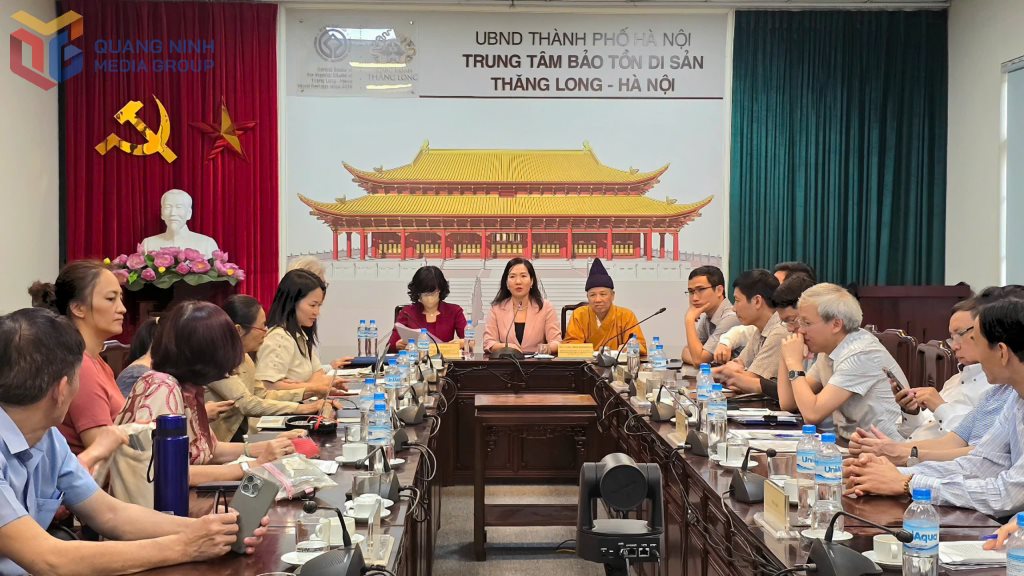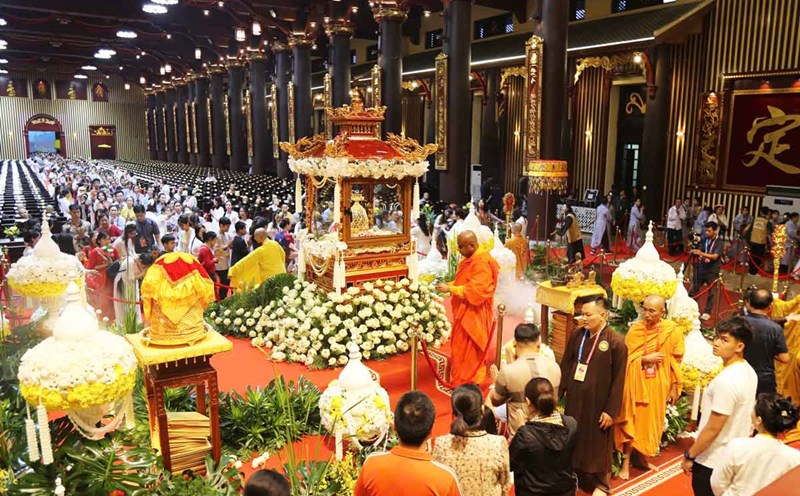It is expected that the meeting to consider the recognition of Yen Tu - Vinh Nghiem - Con Son - Kiep Bac Monuments and Scenes Complex on the World Heritage list will take place tomorrow (July 11, 2025).
The meeting was broadcast live on UNESCO's official website at: https://whc.unesco.org/en/sessions/47com
This is the first time at an annual UNESCO meeting that all daily meetings have been broadcast publicly on UNESCO's official website.
The broadcast does not limit the number of followers and does not require registration, showing UNESCO's commitment to ensuring transparency and expanding access to information for the global public.
The 47th session of the World Heritage Committee officially opened at UNESCO headquarters, Paris, France on July 7 and will last until July 16, 2025.
The Vietnamese delegation attended the event with the presence of Permanent Deputy Minister of Foreign Affairs Nguyen Minh Vu - Chairman of the Vietnam National Commission for UNESCO and Deputy Minister of Culture, Sports and Tourism Hoang Dao Cuong - Vice Chairman of the Vietnam National Commission for UNESCO. The delegation also included representatives from agencies under the Ministry of Foreign Affairs, the Ministry of Culture, Sports and Tourism, and delegations from provinces with World Heritage in Vietnam.
The working delegation of Quang Ninh province was led by Mr. Nguyen Hong Duong - Member of the Provincial Party Standing Committee, Head of the Provincial Party Committee's Propaganda and Mass Mobilization Department; with the participation of Ms. Nguyen Thi Hanh - Vice Chairman of the People's Committee of Quang Ninh province.
At this session, one of the core tasks of the Vietnamese delegation in general and Quang Ninh province in particular is to protect and mobilize the recognition of the Yen Tu - Vinh Nghiem - Con Son - Kiep Bac Monument and Scenic Landscape Complex on the World Heritage list.
Vietnam nominated Yen Tu - Vinh Nghiem - Con Son Kiep Bac Complex to center on Truc Lam Zen sect - a Buddhist Sangha founded by Buddha Tran Nhan Tong in the 13th century, which plays a role in linking many places, events, and figures in history.

Started in 2012, over the past 13 years, the authorities have coordinated with ICOMOS (UN UNESCO's professional consulting unit) and international experts to survey and appraise the site in Quang Ninh, Hai Phong (old Hai Duong province) and Bac Ninh (old Bac Giang province) - where the heritage complex is located.
According to the nomination documents, the complex has a total core area of 525.75 hectares, the total buffer zone area is 4,380.19 hectares. In which, the core area consists of 12 main heritage components, fully reflecting the stages of formation, spread and revival of Truc Lam Zen sect. The buffer zone plays a role in protecting the cultural landscape, ensuring the integrity and cohesion of the complex, and is strictly managed.
The relic complex is a sacred cultural landscape synchronously planned with hundreds of pagodas, temples, towers and ancient relics, spread across 3 provinces and cities, connected into a unified body in both space and spirituality.
This is an inter-provincial nomination dossier of Vietnam, with special significance in terms of religion, culture and history, which has existed for more than 700 years and has become a living cultural heritage.
The unique feature of Truc Lam Buddhism is that the only Buddhist Zen sect in the world was founded by a king. Truc Lam harmonizes Dai Su Buddhist ideology with Confucianism, Taoism, Vietnamese cultural traditions and indigenous beliefs, creating a unique spiritual and philosophical identity, expressing the rare intersection between religion, government and culture, promoting the values of peace, harmony and reconciliation.
Truc Lam's influence extends beyond the national scope, spreading throughout the region and the world. Currently, Truc Lam Buddhism has more than 30 million followers, 50,000 monks and 15,000 pagodas in more than 30 countries such as Korea, India, the US, the UK, Japan and many other countries. In France, Truc Lam Paris Pagoda is notably mentioned and in the US, there is the Tran Nhan Tong Award for Peace.











